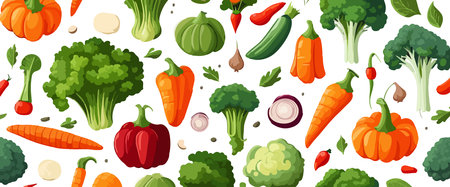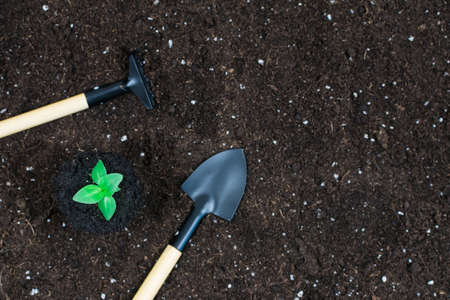1. Understanding the UK Climate and Growing Zones
The United Kingdom’s climate is renowned for its variability, making careful planning essential for gardeners aiming for year-round harvests. The UK predominantly experiences a temperate maritime climate, marked by mild winters, cool summers, and consistent rainfall throughout the year. However, regional variations are significant: southern England tends to enjoy warmer temperatures and a longer growing season, while Scotland and northern regions face shorter, cooler summers and harsher winters.
Understanding these climatic differences is crucial when deciding when to start seeds indoors. The UK is divided into several horticultural growing zones, which are determined by average minimum winter temperatures. For instance, much of southern England falls into zone 9, whereas Scotland often sits in zones 7 or 8. These zones directly influence the timing of seed sowing; those in milder zones can start seeds earlier in the year, while colder areas may need to wait until conditions are less risky for young plants.
By recognising your local climate patterns and growing zone, you can tailor your seed starting schedule for optimal success. This foundational knowledge ensures that seedlings are robust enough to thrive once transplanted outdoors, regardless of whether you’re aiming to produce crops through winter or extend your summer bounty. Ultimately, aligning your indoor seed starting dates with your specific region’s conditions is the first step towards achieving reliable year-round harvests across the UK.
2. Key Factors Affecting Indoor Seed Starting
Successfully starting seeds indoors in the UK requires careful consideration of several environmental and practical factors unique to British homes and weather patterns. Understanding how these elements interact will help ensure strong seedlings and a continuous harvest throughout the year.
Day Length in the UK
The UKs latitude means day length can vary dramatically between winter and summer. During December and January, daylight hours may drop below 8 hours per day, whereas midsummer days stretch well beyond 16 hours. This fluctuation directly impacts seedling growth, with insufficient light in winter causing leggy, weak plants. Supplementary lighting, such as LED grow lights, is often necessary for successful early-season sowing.
Indoor Temperatures
British homes typically maintain indoor temperatures between 16°C and 21°C. However, certain seeds require specific temperature ranges for optimal germination. For example:
| Seed Type | Preferred Germination Temperature (°C) | Notes for UK Homes |
|---|---|---|
| Tomatoes | 21–24 | Use heated propagators or airing cupboards if rooms are cooler |
| Lettuce | 15–18 | Most rooms suitable; avoid radiators or draughts |
| Aubergine | 24–27 | Require warm spot or heat mat for reliable germination |
| Cabbage/Brassicas | 13–18 | Tolerant of cooler conservatories or unheated rooms |
Light Requirements & Solutions
Many British homes lack sufficient natural light in early spring due to overcast skies and shorter days. South-facing windowsills are ideal but still might not provide enough intensity. Consider:
- Sowing under artificial lights: Use full-spectrum LED grow lights on timers set for 12–14 hours daily.
- Avoiding window sills above radiators: These can dry out compost rapidly and cause uneven growth.
- Rotating trays regularly: Ensures even exposure if using windowsills, preventing seedlings leaning towards the light source.
Other Considerations Specific to the UK Climate & Homes
- Draughts and Fluctuations: Old houses may have draughty windows or inconsistent heating—use propagator lids or position trays away from cold spots.
- Mould and Humidity: High humidity indoors (especially in kitchens and bathrooms) can encourage fungal diseases; ensure good air circulation around seedlings.
- Pest Management: Watch for fungus gnats or aphids that sometimes thrive in warm, moist environments indoors during late winter.
- Sowing Schedules: Consult local frost dates and always check seed packets for recommended indoor sowing times based on your region (e.g., Scotland vs. southern England).
Summary Table: Key Indoor Seed Starting Factors for UK Growers
| Factor | UK-Specific Advice |
|---|---|
| Day Length | Add artificial light Nov–Feb for optimal seedling growth |
| Temperature Control | Use heated propagators or heat mats as needed; avoid radiators/draughts |
| Nutrient-Rich Compost | Select peat-free seed compost suitable for UK standards; avoid garden soil indoors |
| Pest & Disease Prevention | Avoid overwatering; maintain airflow; inspect regularly for mould/pests |
| Sowing Timetable Awareness | Match sowing dates to local frost timings and microclimate conditions |
This careful attention to the unique attributes of British homes and weather will give your indoor seed-starting efforts the best possible foundation, paving the way for healthy transplants and a reliable year-round harvest.

3. Optimal Timing for Sowing Popular Crops Indoors
Understanding the right time to start seeds indoors is crucial for gardeners across the UK who aim for a continuous harvest throughout the year. The British climate, characterised by its unpredictable weather and relatively short growing season, means that timing can make all the difference between success and disappointment. Below are practical guidelines for sowing popular vegetables, herbs, and fruits indoors, ensuring robust seedlings ready for outdoor transplanting when conditions are optimal.
Vegetables: Getting Ahead of the Season
Tomatoes
Start tomato seeds indoors from late February to early March in southern regions, and mid-March for northern areas. This allows for strong growth before moving them outdoors after the last frost, typically around late May.
Peppers and Aubergines
Sow pepper and aubergine seeds indoors between February and March. These crops need a long growing season and benefit from warmth and steady light; a heated propagator is recommended for best results.
Cabbage, Cauliflower, and Broccoli
Begin sowing brassicas like cabbage, cauliflower, and broccoli from late January to early March. Early indoor sowing ensures mature transplants can be set out under cloches or fleece from April onwards.
Herbs: Fresh Flavours Year-Round
Basil
Sow basil seeds indoors from March to April on a sunny windowsill or under grow lights. Transplant outside only after all risk of frost has passed in late May or June.
Coriander and Parsley
Coriander and parsley can be started indoors as early as February. Both tolerate cooler conditions but will thrive if moved outdoors after hardening off in mid- to late spring.
Fruits: Early Starts for Sweet Rewards
Strawberries
For strawberries grown from seed, sow indoors between January and March. Seedlings develop slowly; transplant them into containers or beds once sturdy enough and all frosts have passed.
Melons
Sow melon seeds indoors during April. These sun-lovers require warm conditions, so ensure they are kept above 18°C until transplanting into a greenhouse or polytunnel in late May or June.
General Tips for Success
Always check seed packets for specific recommendations as varieties may differ. Use quality seed compost, provide sufficient light, and maintain consistent moisture levels. Gradually acclimatise young plants to outdoor conditions (a process known as hardening off) over 7–10 days before final planting out. By following these UK-specific timings and techniques, gardeners can extend their productive season and enjoy homegrown produce nearly all year round.
4. Utilising Greenhouses, Propagators, and Window Sills
Making the most of the British climate often means getting creative with your indoor growing spaces. Whether you have a traditional greenhouse, a compact heated propagator, or simply a sunny window sill, each environment can play a crucial role in extending your sowing season and securing year-round harvests.
Greenhouses: Maximising Potential in Variable Weather
Greenhouses are a staple for many UK gardeners, providing protection from unpredictable weather and frosts. For early seed starting, ensure your greenhouse is clean and ventilated to reduce disease risk. Use staging or shelving to increase space for trays and pots. Consider investing in a small paraffin or electric heater for those chilly spring nights to keep temperatures consistent.
Key Advantages of Greenhouse Growing
| Benefit | Description |
|---|---|
| Frost Protection | Extends the sowing window for tender crops like tomatoes and peppers. |
| Controlled Humidity | Ideal for germinating seeds that require steady moisture levels. |
| Sheltered Environment | Protects seedlings from heavy rain and wind common in the UK. |
Propagators: Precision Germination for Early Starts
Heated propagators are invaluable for starting seeds that need warmth to germinate before outdoor conditions improve. They allow precise temperature control, which is essential for crops such as aubergines or chillies. Position propagators in a bright area but out of direct sunlight to prevent overheating. Regularly monitor moisture to avoid damping off—a common issue with high humidity.
Popular Seeds to Start in Propagators (by Month)
| Month | Crops to Sow Indoors |
|---|---|
| January – February | Chillies, Aubergines, Early Tomatoes |
| March – April | Cucumbers, Courgettes, Melons |
| May onwards | Basil, Late Succession Salad Greens |
Window Sills: Making Small Spaces Work Harder
If you lack dedicated gardening equipment, don’t underestimate the power of a well-placed window sill. South-facing windows provide ample light for herbs, lettuce, and microgreens throughout the year. Use trays with drainage and rotate them regularly so seedlings grow evenly. Compact varieties of tomatoes or dwarf beans can even be started indoors before moving them outside after the last frost.
Tips for Optimising Indoor Seed Starting Spaces:
- Select seed trays or pots that fit your available space.
- Label all containers clearly—succession sowings can become confusing otherwise.
- Use quality seed compost for strong root development.
- If natural light is limited, consider using LED grow lights to supplement daylight hours during winter months.
- Avoid overwatering by checking soil moisture daily—British homes can be surprisingly humid!
The key to successful year-round harvests lies in making strategic use of every indoor growing opportunity available. By understanding the strengths of greenhouses, propagators, and window sills within the context of the UK’s unique seasonal patterns, gardeners can ensure strong starts for their crops whatever the weather outside.
5. Succession Planting for Continuous Harvests
To maximise the productivity of your UK garden and enjoy fresh produce throughout the year, mastering the art of succession planting is essential. By staggering your indoor sowings according to the British gardening calendar, you can ensure a steady supply of vegetables and herbs, even during the cooler months.
Understanding Succession Planting
Succession planting involves sowing seeds at regular intervals, rather than all at once. This technique prevents gluts of crops followed by periods with nothing to harvest. For indoor seed starting, it’s especially effective for quick-maturing crops like lettuce, radishes, spinach, and herbs. By following a structured plan tailored to the UK’s climate and daylight patterns, you can keep your harvests coming in waves.
Key Strategies for Staggered Sowings
- Regular Intervals: Every two to three weeks, sow small batches of seeds indoors. This is particularly useful from late winter through spring when outdoor conditions are less reliable.
- Crop Rotation: Alternate crop families with each sowing to reduce pest and disease build-up. For example, follow a batch of leafy greens with a set of root vegetables.
- Variety Selection: Choose cultivars with different maturity dates—early, mid-season, and late—to further spread out your harvest window.
Tailoring Succession Sowing to the UK Calendar
- Early Spring (February–March): Start hardy crops like leeks, onions, and brassicas indoors for transplanting later.
- Late Spring (April–May): Begin tender crops such as tomatoes, courgettes, and peppers under cover.
- Summer (June–August): Continue sowing quick crops like salad leaves and radishes every few weeks on windowsills or in propagators.
- Autumn and Winter (September–January): Use grow lights or heated propagators for winter salads and herbs; microgreens are an excellent choice for indoor winter harvesting.
Sustaining Year-Round Harvests
The unpredictable UK weather means flexibility is key. Monitor growth rates closely—indoor warmth can speed up germination compared to outdoor conditions. Adjust your sowing schedule if plants mature faster or slower than expected. With careful planning, succession planting ensures that as one crop finishes, another is ready to take its place, maintaining a continuous supply of homegrown produce regardless of the season.
6. Common Challenges and Local Solutions
While starting seeds indoors is a proven strategy for year-round harvests in the UK, it does come with its own set of challenges unique to our climate and growing conditions. Understanding these pitfalls—and how to overcome them—can make all the difference for British gardeners.
Low Light Levels During Winter Months
One of the most common hurdles is insufficient natural light, especially from November to February when days are shortest. Many homes in the UK have north-facing windows or limited direct sunlight, which can result in leggy, weak seedlings.
Solution: Supplemental Grow Lights
Investing in quality LED grow lights designed for horticultural use can provide the spectrum needed for strong seedling growth. Position lights close to seedlings and set timers to mimic longer daylight hours, aiming for 12-16 hours of light daily.
Temperature Fluctuations and Draughts
British homes often have cool spots near windowsills or radiators that create uneven temperatures. Sudden cold snaps or overheating can stress young plants, slowing development or causing damping-off disease.
Solution: Controlled Microclimates
Use heated propagators or seed trays with lids to maintain stable warmth. Avoid placing trays directly above radiators, and consider using a digital thermometer to monitor temperatures. For draughty rooms, insulate window ledges with foam or use a small grow tent.
Poor Humidity Control
The UK’s indoor heating during winter months can lead to dry air, while wet spells may cause excessive humidity—both problematic for seedlings.
Solution: Balanced Moisture Management
Regularly mist seedlings to increase humidity but ensure adequate ventilation to prevent fungal issues. Use capillary mats or gravel trays to maintain consistent moisture from below rather than over-watering from above.
Local Pest Issues Indoors
Aphids, fungus gnats, and even slugs sometimes find their way indoors in the UK, particularly in older properties or greenhouses attached to houses.
Solution: Vigilant Monitoring and Natural Defences
Inspect seedlings regularly for early signs of pests. Introduce sticky traps for flying insects, and use biological controls such as nematodes where appropriate. Isolate new plants before integrating them into your main growing area to prevent infestations.
Conclusion
Navigating these common challenges requires a keen understanding of local conditions and a proactive approach tailored to the British climate. By anticipating obstacles and applying these practical solutions, UK gardeners can successfully start seeds indoors and enjoy continuous homegrown harvests throughout the year.


